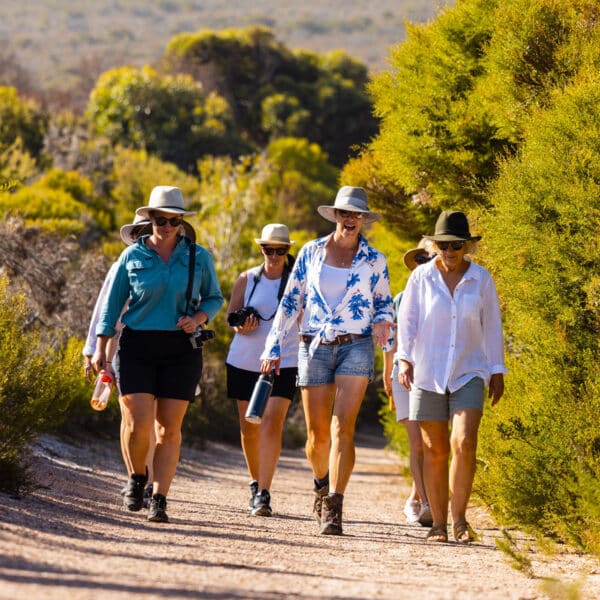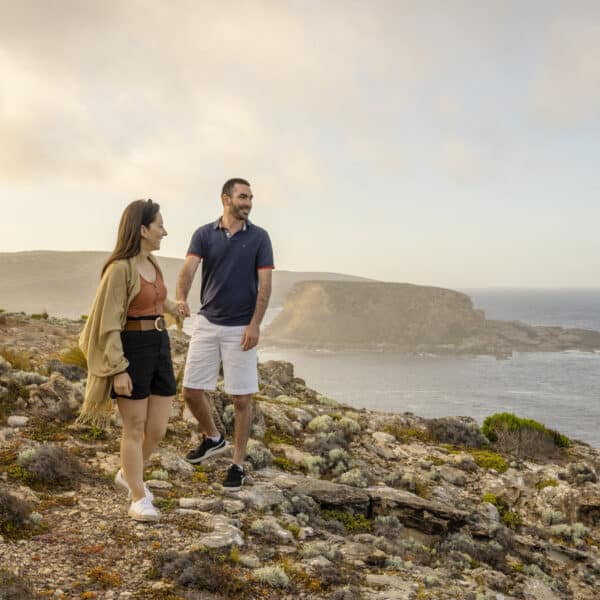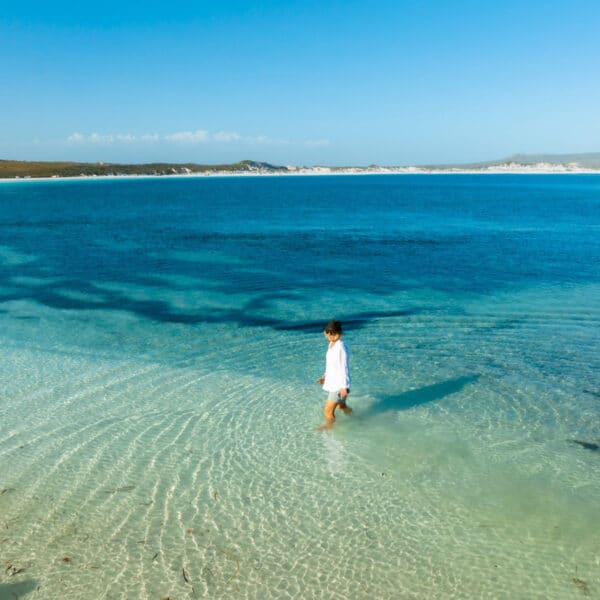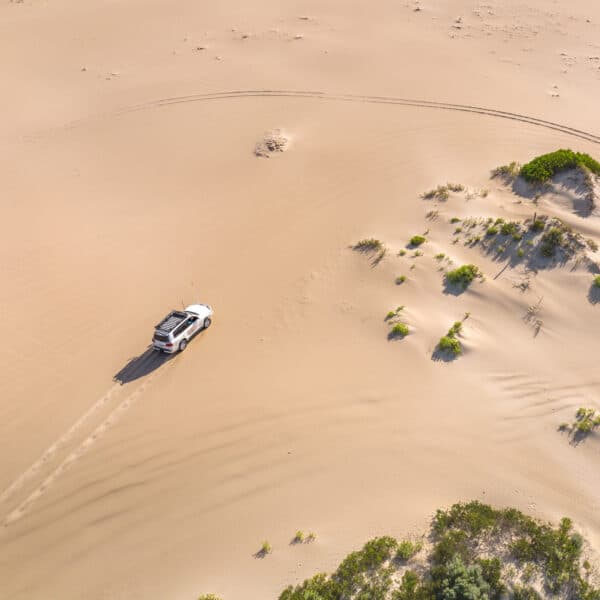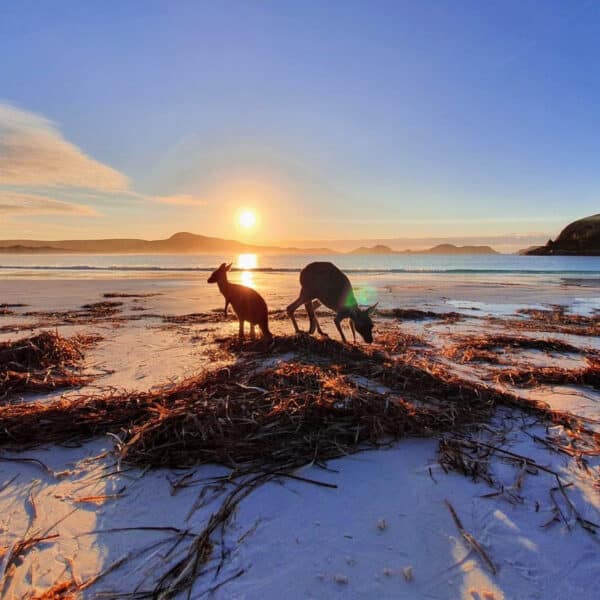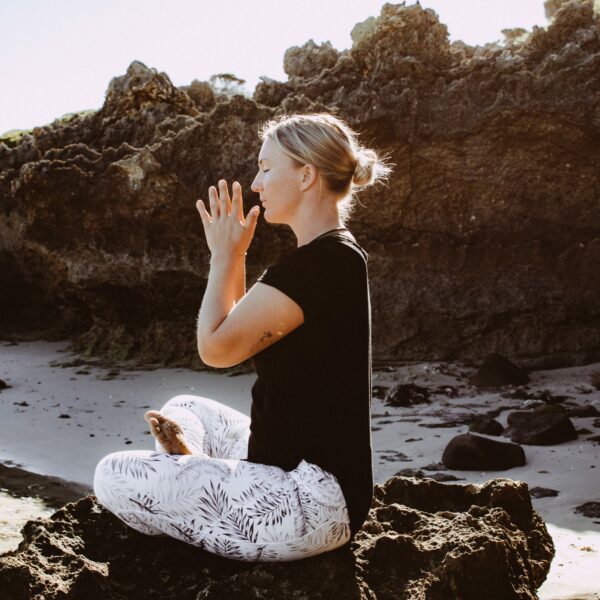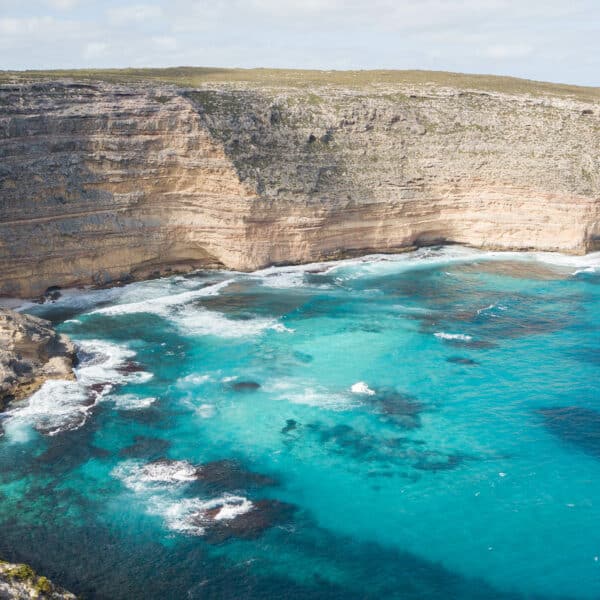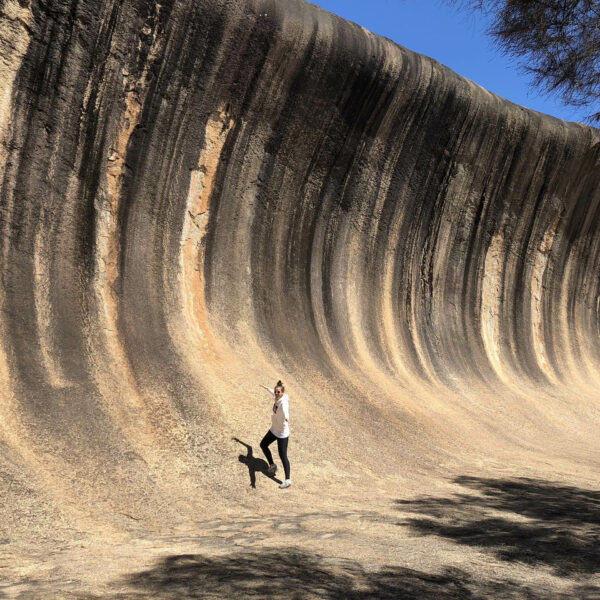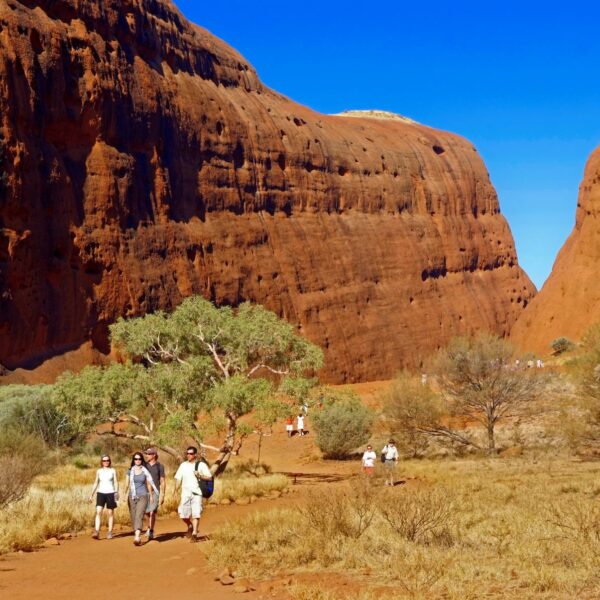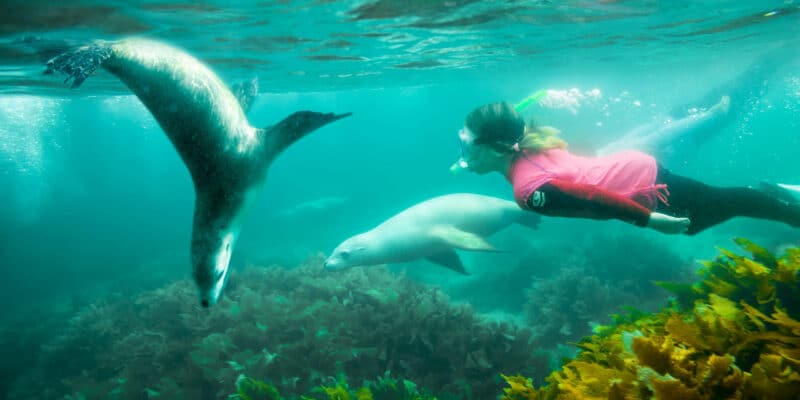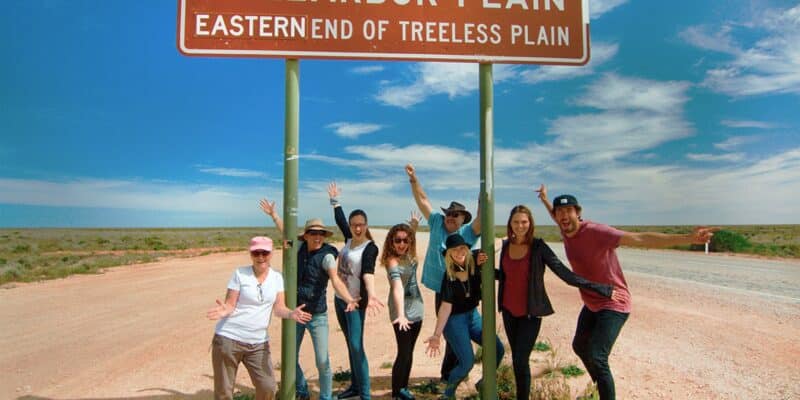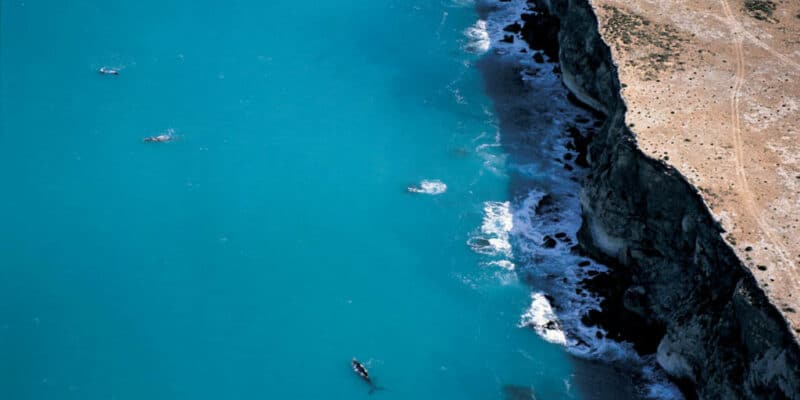News
Regenerative Tourism Specialist Joins Untamed Escapes

Introducing Nadine
Dedicated to leading the way in regenerative tourism in Australia, Untamed Escapes have created a permanent Regenerative Tourism Specialist position. We are very excited to welcome regen tourism professional and academic Nadine Schmidt to the team to champion this focus of our business.
Nadine Schmidt (Master of Arts Tourism and Destination Development) is a lecturer, tutor, and online facilitator in higher education in Australia and Europe on sustainable tourism, hospitality, and regenerative tourism. She is further involved in several projects about regenerative development in the tourism industry on a local and global scale.
In 2023, Nadine was a keynote speaker at the “Tourism For Good” conference in South Australia, where she gave an introduction to Regenerative Tourism to over 350 tourism industry delegates.
We are grateful to have Nadine as part of the Untamed Escapes team!
Q & A with Nadine
Q. Before you tell us about your exciting new role, can you tell us what Regenerative Tourism is and why it is so important?
Regenerative Tourism doesn’t have an official definition as yet. It is a new paradigm and comes from regenerative design and development. In short, it can be described as leaving a place better than you found it or giving back more than you take away from the environment and communities you visit.
Regenerative Tourism answers the question — how can we improve the natural places and communities we visit, especially those damaged or degenerated through previous tourism?
It involves a complete mindset change and paradigm shift to a different way of seeing the world, specifically a nature-based and holistic view. Regenerative Tourism includes Indigenous wisdom and life views. It contributes to creating the conditions for life to thrive. It offers a life-centric practice compared to the current extractive models of our economic system and society.
Regenerative means to replenish, revitalise, and heal, and Mother Nature is inherently regenerative, so why not mimic her, work with and learn from her? Regenerative Tourism is co-designed with the community and puts nature at the centre with the design for humans to co-evolve with it. It has the potential to tackle the challenges humanity is facing, such as climate change and biodiversity loss.
By changing the way of operating a business and inherently society, we can change our way of living and include regenerative practices – in both our personal life and at work – to create these conditions for life to thrive on this beautiful planet.
We need to replace our old economic system, based on extraction, competition, self-interest, and over-consumption, with a new way of economic thinking. This new way focuses on caring for the life and well-being of all living things and the planet.
The old and current tourism economic system can lead to over-tourism and even degrading and destroying the places that drew visitors to it. Moreover, disruptions caused by global pandemics, climate change, natural disasters, exploitation and cultural loss lead to unhappiness and negative impacts on the local communities.
To create a resilient tourism industry, we need to install new economic models based on different factors such as:
• collaboration,
• culture and
• well-being
that exist within the unique living system of each destination.
Through Regenerative Tourism, there is an opportunity to:
• preserve biodiversity,
• revitalise the local community,
• regenerate the environment and
• create reimagined transformative experiences for the visitor.
The community is at the centre of the tourism experience, and tourism development is co-designed with them. Previously, tourism was “done” to a destination without including the impacted local community or considering the environment.
The success indicators were based on numbers and profit rather than on well-being and thriving of life. This resulted in the tourism industry shifting toward a more sustainable way of operating. Still, considering the current challenges, we must do more, and tourism that is regenerative can be a tool to achieve this on a “glocal” scale.
As it is a new paradigm, there is just so much more to it, so this is just a short introduction. Once you see it, you can’t “unsee” it, so I invite everyone to learn more about this exciting new mindset.
Q. What is the difference between Regenerative and Sustainable Tourism?
There is, in fact, a considerable difference. Regenerative tourism goes beyond sustainability and is the next step after it. As we know, sustainability is about finding the balance between the three pillars of sociocultural, environment and economy. Regeneration adds spiritual and political pillars and is about restoring and regenerating the places.
Tourism should include more place-based, nature-centred and community-inclusive working tools. Whereas sustainability originates from the industrial tourism industry mindset, by reducing the impact or “sustaining” it, Regenerative Tourism pushes it further. It urges humanity to change our mindsets and find ourselves in a new relationship with nature and communities; to see that we are part of a living system and not apart from nature.
We look to Nature for answers to questions in Regeneration. How can tourism mimic the planet’s natural system’s ability to be circular in order to be a restorative force to both travellers and hosts, even once the experience is over? Ideally, a transformation experience happens, so the travellers take the knowledge and mindset change home and continue having meaningful impacts in their personal lives.
Indeed, sustainability is about reducing everything, having less impact, reducing emissions and so on, whereas, in Regeneration, it is about ‘more’ and ‘positive’. How can we generate more impact on health, community, and environment and also change our relationships first with ourselves, with the “others”, and with nature, including building the capacity to care for another and have empathy?
Regen includes Western and Indigenous knowledge systems, which are already more nature-centred. Their wisdom and values must be honoured, and transformative travel experiences can be created in collaboration with First Nations.
Whereas in sustainable tourism, the global sustainability solution approach tends to be “one-size-fits-all”, regen tourism tailors itself to each destination individually. As every place is unique and hence requires unique options for tourism that can be regenerative.
Furthermore, in sustainable tourism, the industry is still seen as a silo, a standalone industry. However, using the living systems lens, tourism is part of the whole destination system. That includes other industries such as agriculture, education, food and energy. So, how can collaborative effort across all industries lead to a thriving, living destination as all industries are interlinked?
Additionally, while in sustainable tourism, the concept is of reducing the damage or harm done to a destination (in energy, waste, water, etc.), regen tourism goes beyond that and creates more meaningful engagement with the place and the local community. Hence setting the path for the tourism industry to act on a global and local stage (= “glocal”).

Q. Do you remember a catalyst or moment in your life that sparked your passion for Regenerative Tourism?
I grew up in the German countryside in a Nature Park area, surrounded by beautiful forests and meadows and hence got a deep connection to nature with its flora and fauna.
During my studies, subjects such as “Ethical Tourism” increased my interest. Also, I had a friend who was a lecturer in sustainable business management. Her life view and attitude inspired me to later do professional development in sustainable tourism and ecology.
Afterwards, I gave teaching a go and really enjoyed it. It is very rewarding to positively impact students and future tourism leaders and raise awareness about responsible tourism. This is why I believe in the power of education and raising awareness, not just in tourism but in any industry and for everyone.
Additionally, reading scientific articles and books and watching documentaries about nature, science and global challenges (I love the Sir David Attenborough ones, such as Breaking Boundaries). This made me think about how I can tackle these challenges in my personal and work life through how I live and work.
Looking outside of the box and learning how our planet is a living system and how everything is interconnected (check out Peter Wohlleben’s “The secret network of nature”). I love seeing the bigger picture, the wonder that life on this beautiful planet truly is.
Hit me up if you need a recommendation for a book or documentary about plastic, waste, climate change, marine conservation, and so on!
Q. What will a day in the life of a Regen Tourism Specialist at Untamed Escapes look like?
It will be very diverse! It will be about collaboration, a big part of the Regeneration mindset. I am already looking forward to establishing meaningful partnerships with all stakeholders involved and co-creating products in each of the beautiful and unique destinations we take our guests.
Informing stakeholders (including the host community) about this fantastic paradigm through different ways of educational tools will surely be an exciting part of this position. As I’ve already been teaching future leaders in tourism, I am always thrilled to see how their mindset changes once they know more about sustainability and the shift to Regeneration.
Another aspect will be the analytical side of the position, such as measuring carbon emissions, creating science-based targets, and looking into certifications and Sustainable Development Goals. Analysing the internal and external factors along the supply chain and truly going “down the rabbit hole” will be a big part of ensuring our products are regenerative.
Implementing it requires innovative and creative ideas. Looking at different examples from around the world and considering how these approaches can be adapted for Untamed Escapes will be super exciting. And indeed, we’d like to share this knowledge with other small tourism businesses and hope that others follow in our footsteps. In addition, the cross-collaboration with other industries will be interesting, and reaching out to new partners from different areas such as marine and nature conservation, carbon sequestration, and First Nations is something I’m super excited about.
This is an incredibly rare and unique role, especially in a small tourism business. I’m sure it will evolve as we work our way through a list of priorities and the creation of our Regenerative Tourism Action Plan. I am very excited to be taking on this impactful position with Untamed Escapes.

Q. What are you most looking forward to in your role?
To work with Hassie and a team of like-minded people who share the same values as me and believe in tourism’s potential to be a force for good and create truly regenerative transformational experiences. It makes a huge difference working with like-minded people in a supportive environment rather than being the underdog talking to a surrounding that does not want to change.
Education and personal development of all stakeholders, including the host communities, is an integral part of regenerative tourism. I am excited to share my knowledge and passion for Regenerative Tourism with the team and all partners and stakeholders, as well as provide more information on this topic for interested guests.
I’m excited to meet all the great small local businesses, individuals and communities where we operate. Collaborating with them is key in creating thriving destinations. In addition, I am excited about the fantastic current product range and to see how the current and future products can be adjusted and recreated in a regenerative way.
Q. Who inspires you in the Regenerative Tourism space and where can people learn more?
Definitely the “pioneers” and thought-proving work by academics and practitioners such as Anna Pollock, Dianne Dredge, Susanne Becken, Matt Sykes, Loretta Bellato and Sonia Teruel. They know so much about Regenerative Tourism and are not afraid to challenge the (tourism) status quo.
There are also a lot of practitioners from Aotearoa New Zealand. Josie Major and Debbie Clarke interview them in their excellent podcast about great examples of Regenerative Tourism.
I also like to look outside of the tourism industry. Articles by Daniel Christian Wahl, and learning about creating Regenerative Cultures is quite inspiring. Or Michelle Holiday with the Living Systems Thinking and Kate Raworth’s Donut Economics. I draw knowledge from several areas and see how this can be applied and implemented within the tourism industry.
Besides that, I’m thrilled to see a lot of young women in my generation from around the world sharing the same worldview and love connecting with them.
